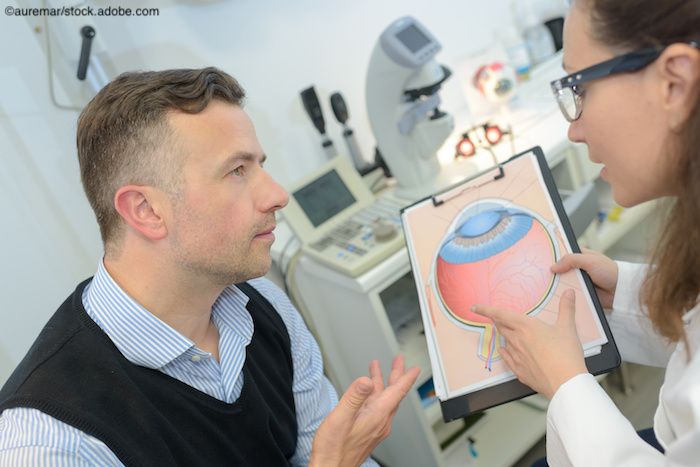Article
Finding a fix for irregular astigmatism after PK
Transepithelial topography-guided PRK can help correct irregular astigmatism after penetrating keratoplasty.

Reviewed by Simon P. Holland, MD

Transepithelial topography-guided photorefractive keratectomy (TG-PRK) to correct irregular astigmatism after penetrating keratoplasty (PK) is safe and efficacious, according to early study results, said Simon P. Holland, MD, Pacific Laser Eye Care Centre, Vancouver, British Columbia. David Lin, MD, was a study co-author.
It is common that astigmatism is high and irregular after PK, Dr. Holland said.
Case series
In this retrospective, nonrandomized consecutive series, researchers focused on contact lens-intolerant eyes that had irregular astigmatism after PK and transepithelial TG-PRK performed with an excimer laser (Schwind Amaris Excimer Laser, Schwind).
Mitomycin 0.02% also was applied. Of 41 eyes treated, 20 had enough data at 1 year for analysis.
Efficacy and safety were analyzed along with preoperative and postoperative uncorrected distance visual acuity (UCDVA), corrected distance visual acuity (CDVA), manifest refraction, topographic cylinder, and the number of Snellen lines gained or lost.
12 months
At 12 months, 30% of eyes (6 of 20 eyes) had UCDVA of 20/40 or better postoperatively compared with none before surgery. Fifty percent (10 eyes) had an improved CDVA of one line or more; 30% (6 eyes) gained two or more lines. Ten percent (2 eyes) lost two or more lines.
The mean preoperative topographic cylinder was 5.07 D, Dr. Simon noted.
The mean astigmatism reduction was 2.62 D, and the mean spherical equivalent improved from - 1.99 D to - 0.96 D. There was no regression within the 12-month period.
No eyes had visually significant haze or infection, although five eyes had delayed epithelial healing, but no long-term sequelae. One eye had an early rejection in the fellow eye.
“This study demonstrates an alternative treatment for highly symptomatic contact lens intolerant patients with irregular astigmatism following PK,” Dr. Holland concluded.
Advantages of the excimer laser used during treatment included high-speed, multidirectional tracking, and cyclotorsion control, he added.
Disclosures:
Simon P. Holland, MD
E: simon_holland@telus.net
This article was adapted from a presentation at the 2017 meeting of the American Society of Cataract and Refractive Surgery. Dr. Holland has financial interests with Alcon Laboratories, Allergan, and Schwind.
Newsletter
Don’t miss out—get Ophthalmology Times updates on the latest clinical advancements and expert interviews, straight to your inbox.





